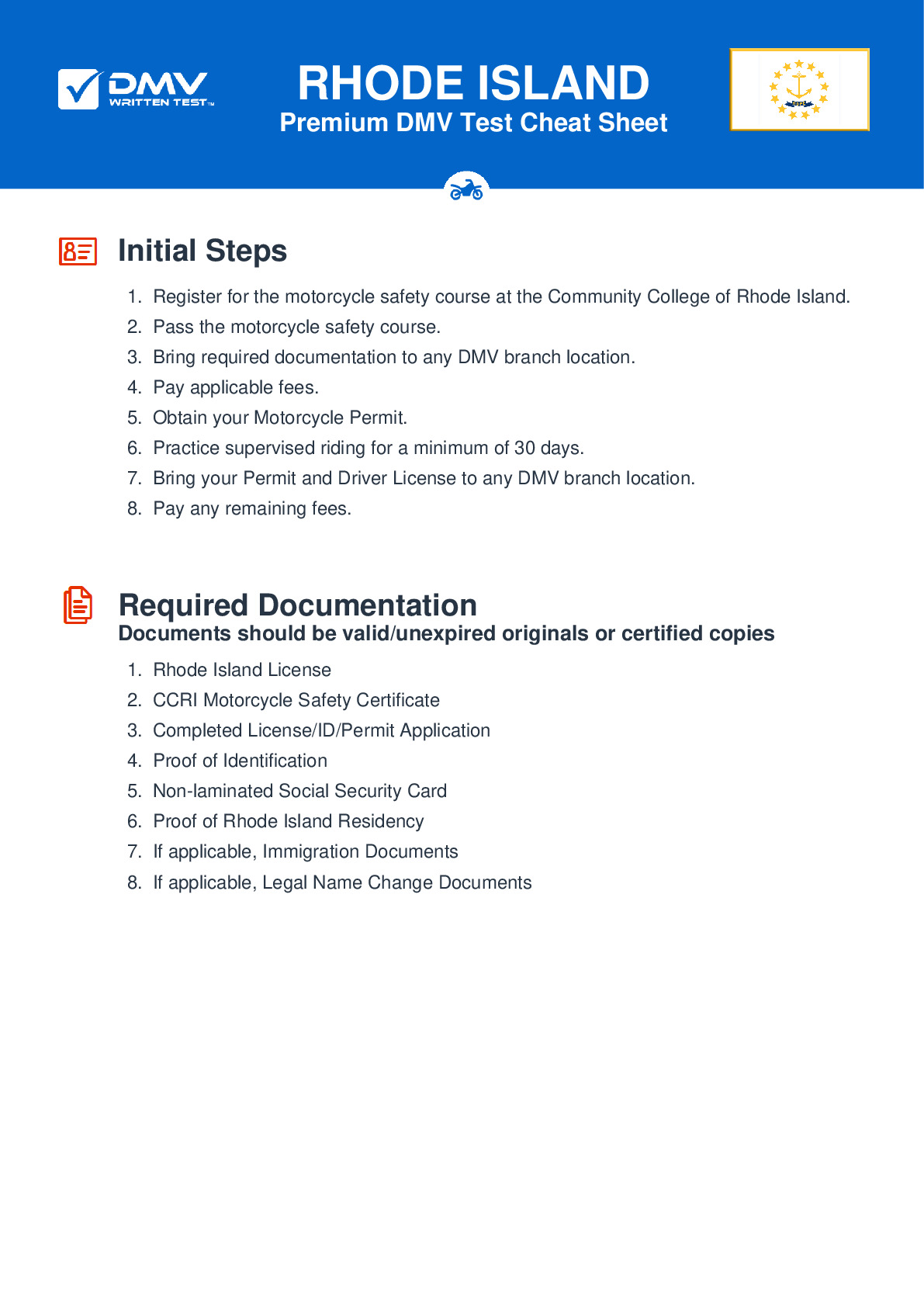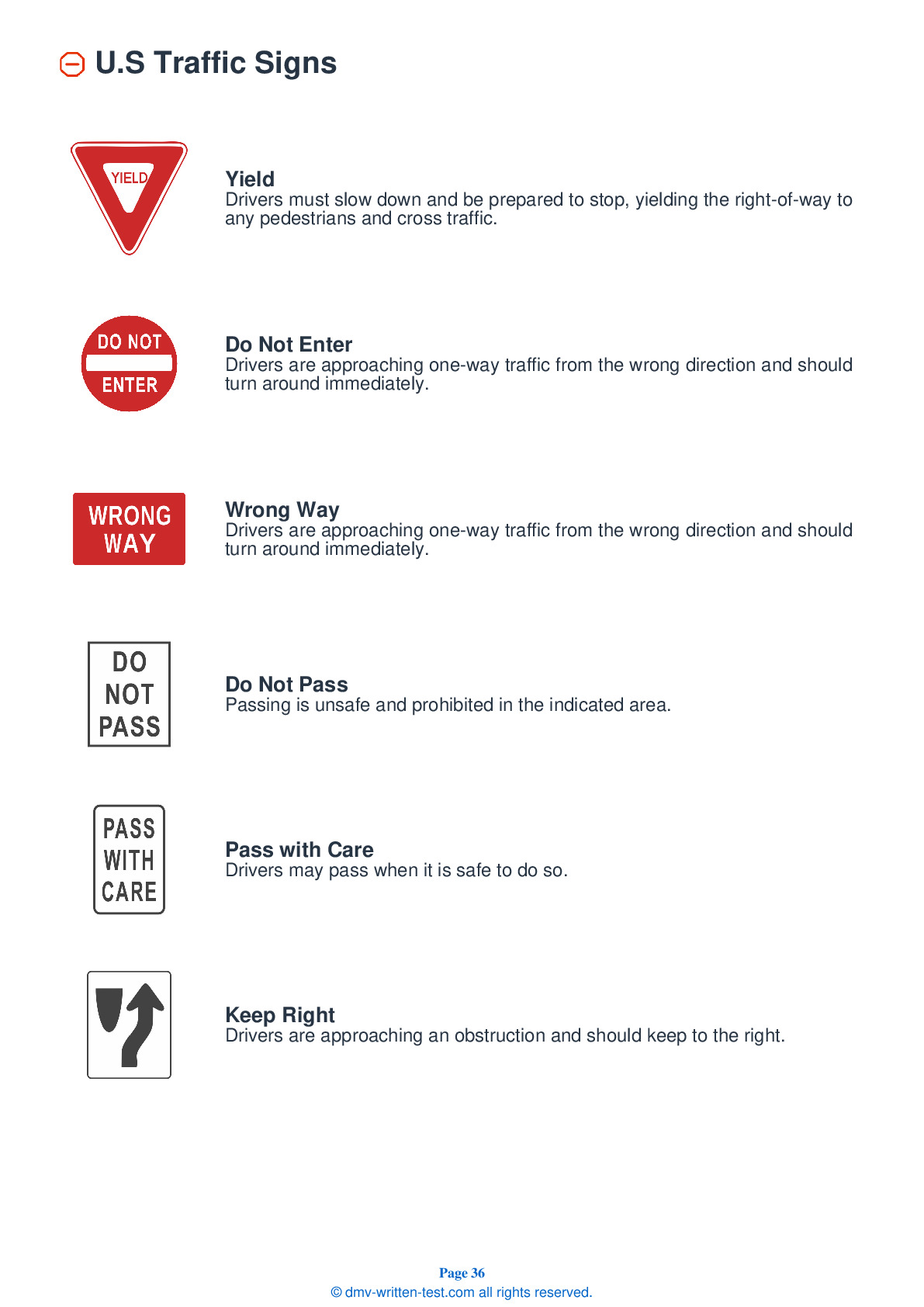2025 Rhode Island Motorcycle Permit Test 6
The following questions are from real DMV written motorcycle permit tests. These are some of the actual permit questions you will face in Rhode Island when getting your motorcycle learners permit. Each motorcycle theory practice test question has three answer choices. Select one answer for each question and select "grade this section." You can find this button at the bottom of the drivers license quiz. For a complete list of questions and answers for Rhode Island please visit https://cheat-sheets.dmv-written-test.com/en/rhode-island/motorcycle.
Number of Tests
Number of Question
Passing Score
19. When riding a motorcycle, you should:
Explanation
There is no single lane position that you always need to avoid. Adjust your position in response to changing conditions on the road.
20. When approaching an intersection, you should:
Explanation
Never assume that other drivers see you, even if they make eye contact with you. It is not uncommon for drivers to look directly at a motorcyclist and still fail to notice them. Always reduce your speed when approaching an intersection.
21. When braking, you should:
Explanation
To brake, squeeze the front brake lever and press down on the rear brake pedal. Always use both brakes when slowing or stopping.
22. Usually, a good way to handle a tailgater is to:
Explanation
Usually, the best way to handle a tailgater is to get them in front of you. If you can do so safely, change lanes and let them pass. Speeding up may only increase the danger by encouraging them to follow you at a faster speed.
23. A rectangular sign may be a:
Explanation
Signs informing road users of road regulations, such as speed limits, are normally rectangular and colored white with black lettering or symbols. Riders must follow the rules posted on these regulatory signs.
24. When slowing or stopping, you should use both brakes:
Explanation
You can achieve maximum stopping power by using both the front and rear brakes. You should use both brakes every time you slow or stop.
25. A child passenger:
Explanation




